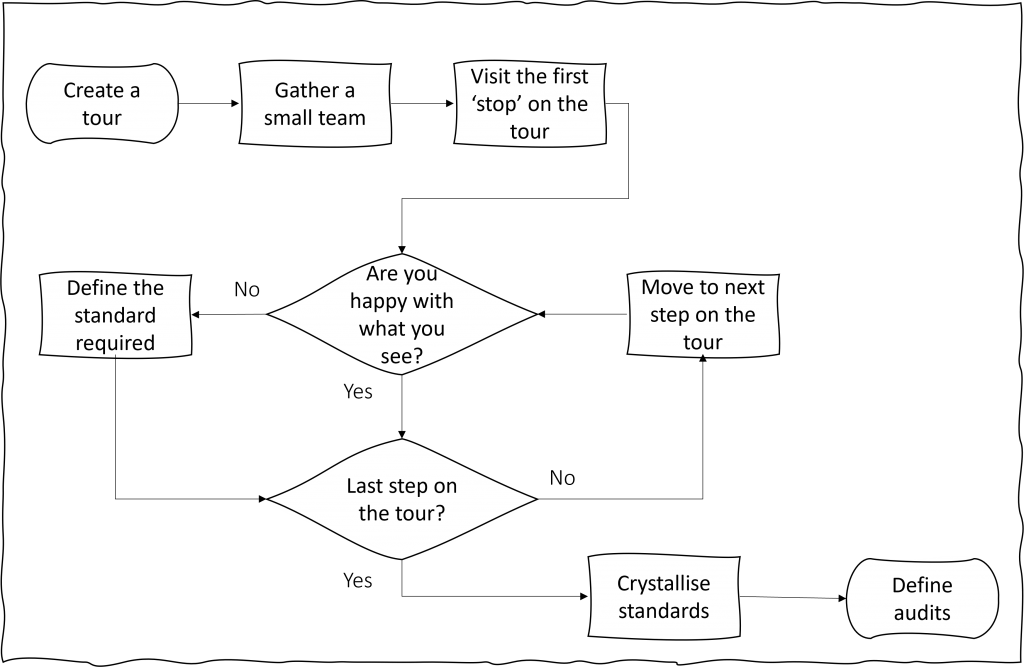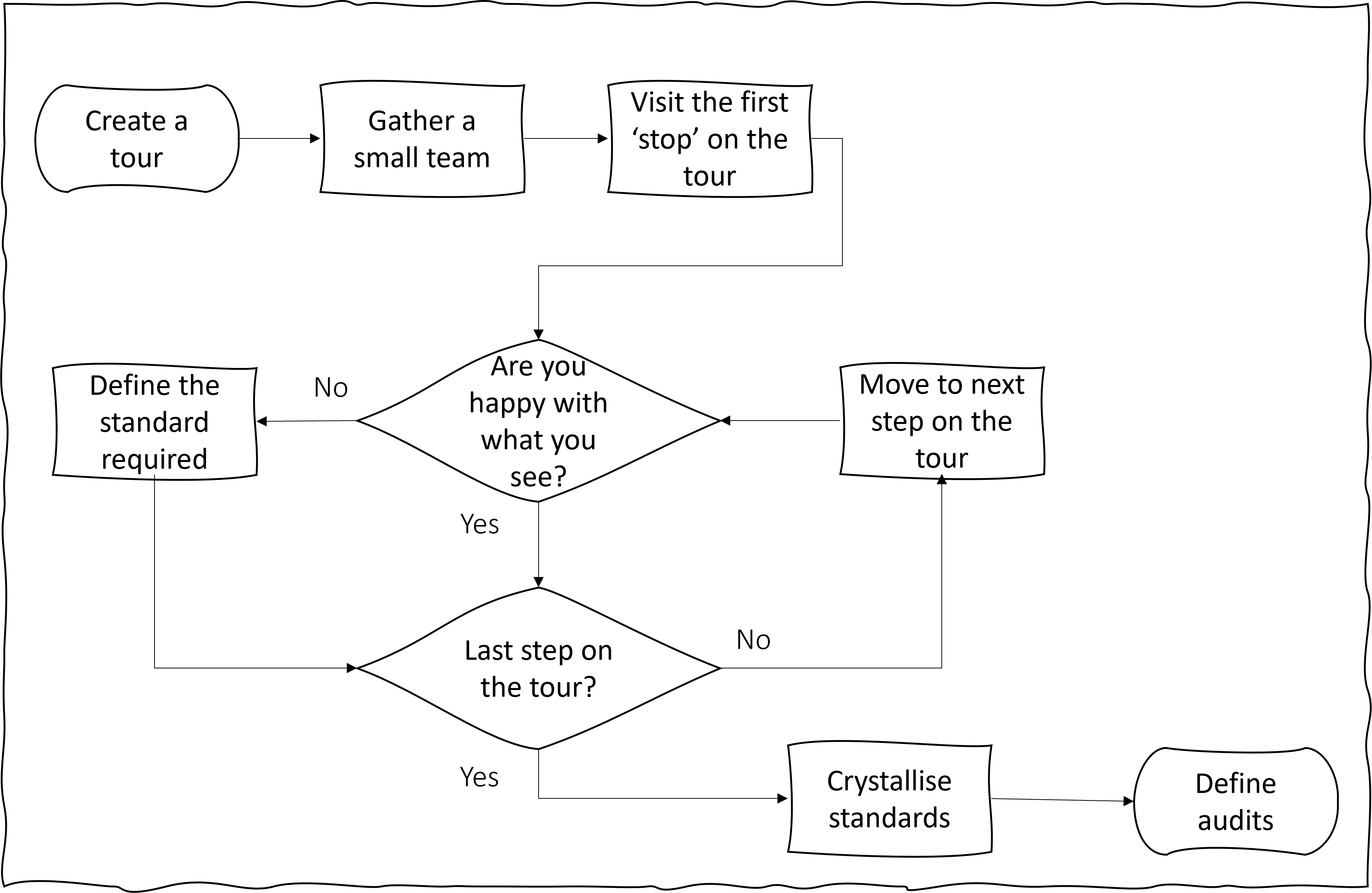Setting standards is key to repeatable business performance. How you set those standards will determine the effectiveness in the long term. There are many people that think telepathy is an acceptable way to do this. There are other people that believe shouting at people is another method that works…
Well…. everyone is different and what works for one person isn’t a guaranteed method for another. In this article I am going to share with you some ideas to help you set standards with your teams and embed them.
What does this have to do with improved on time delivery performance? Think about it for a moment. If you can raise the standards across your business, would life be easier? Yes!
If we can raise the standards through our business it gets easier at the back end. You can tell how good a business is by how much the last step has to sweat… If getting product out the door on time is hard work then there is a problem. Poor activities tend to slide toward the end of a process rather than get dealt with at source.
If you want to see how good something is, watch then end. Projects getting crammed over the line… Despatch teams panicking at month end… Service teams trying to cut corners to make up for a delayed start… you get the idea.
Achieving a high, consistent, on time delivery becomes easier as you raise standards.
Walking around your business is a good way to do this in physical environments. Identify what is good and what could be better. A cautionary point here is around how you identify the items that could be better. Some people respond to a blunt observation. Some people will need a little more clarity on ‘what good looks like’.
You’ll know your people so you can choose an appropriate approach. If in doubt, err on the side of explaining what looks good.
The key here is that you go and look as a team. You can debate anything that arises and then look to gain consensus. If you are into the Lean methodologies you might know this as Gemba. For the rest of us; go, look, see, agree.

To help with the preparation of your walk, consider any arguments that might arise. This is a form of inoculation, where you prepare your responses in advance. This is a great way to smooth out the discussions. If you think there is going to be push back, prepare for it. A small ‘sideways step’ can divert time and energy away from unecessary discussion. Agreeing on the standard is aim here.
You can apply this approach to physical environments, digital workspaces and experiences. Meetings are a good example of the latter.
If you need a little more preparation, a rapid audit is a good option. If you can, determine the characteristics and evidence that would expect then go and look. If you expect a management team to reach a decision within three days, look for it. If you expect that every project will have an evaluation, go look for it. If you expect that your process meets the service level everytime, look for it.
It is the same basic approach. Have a look, decide if you like it and then discuss with the team. If the standards need to raise then be clear about what and how. In fact, using the common prompts here is useful:
- Who
- How
- When
- Where
- When
Articulate what the standard needs to be, so that it is obvious. If you want to add a little more oomph to your definition, include ‘why’. Understanding the purpose of the standard can often help people to take part.
Capture and sustain the standard
Having defined an improved standard isn’t the end of the journey. Achieving the standard every time, without breaking a sweat, is where we need to aim for. My intention for the following points is to give you some food for thought. Pick your own strategies to help you sustain the improvement.
SOPs
SOPs, or Standard Operating Procedures, are an essential tool to consider. Documenting how to operate a process to maintain a standard is often overlooked. Don’t be lazy, write it down!
Work on something that is easy to follow; think fool proof. Don’t write down something complicated. Light and straightforward is order of the day.
Visual standards
If the standard is hard to describe then consider using images. If you are wanting to ‘paint a picture’ then save time with a photo. Get the area into an appropriate condition and snap away. Tell the readers the points to look out for and give them a chance to repeat what you want.
Routines
Never underestimate a routine, it can help your team to keep on track. A simple guide to when things need to happen is all you need to do in most cases. Give your team a clue of how often you need something to happen. Give them the tools to make it happen and then check in from time to time.
Audit
I mentioned auditing earlier in this article. Checking in from time to time is essential. Whether it is you, or something that you can delegate, don’t assume things are right. It takes time to make changes stick, let alone achieve the standard in the first place.
Repetition
Auditing is a form of repetition. Talking to your team helps to repeat the message. Making it an occassional meeting agenda point builds further. I’m sure you can find ways to get the message burned into the minds of your team. This is not a quick fix approach, but results can improve from day one.
I hope this article has given you some food for thought. Setting better standards, or setting them in the first place, is essential management. Take the bits of the above that make sense to you and see what improvements you can make in your business.
